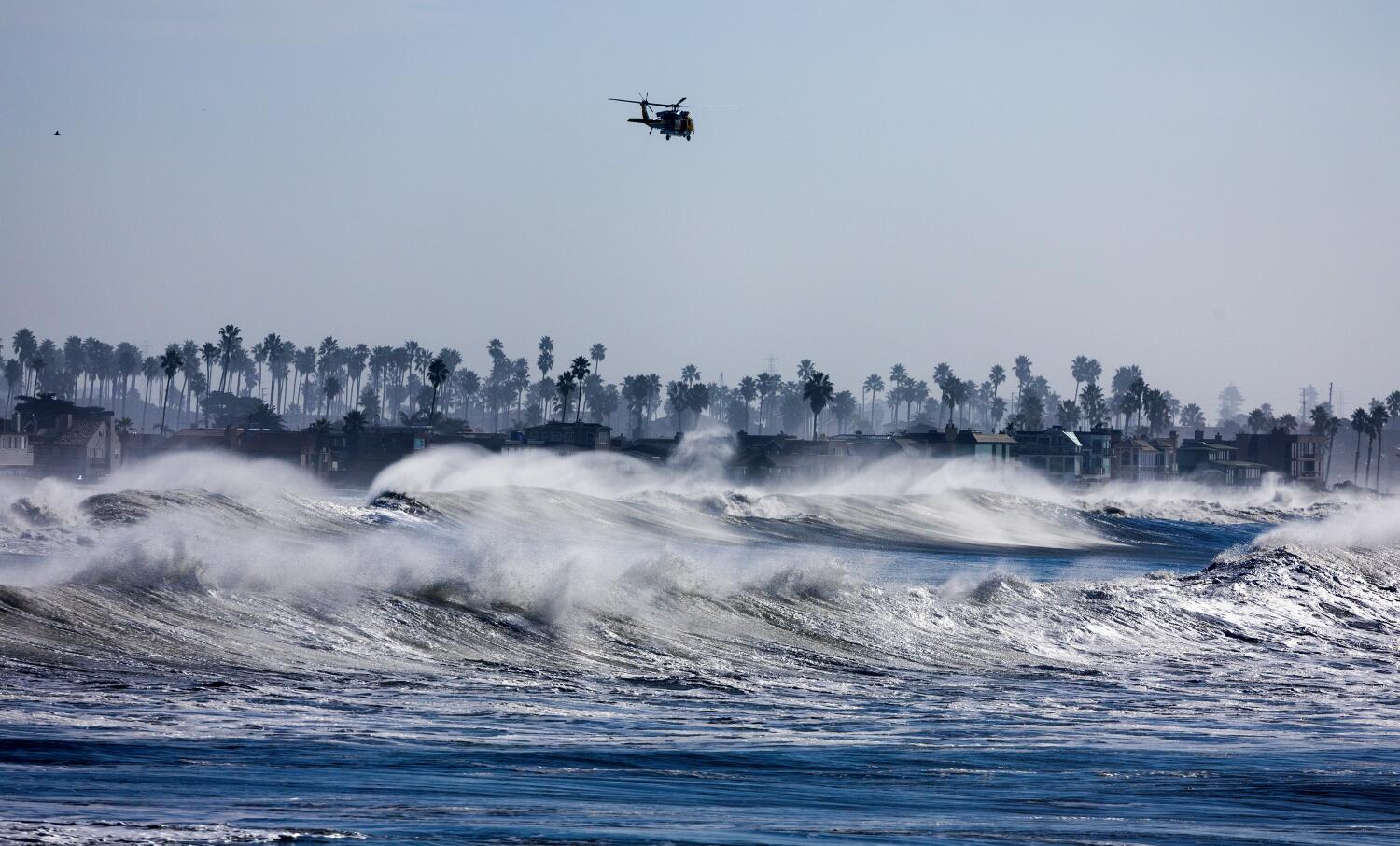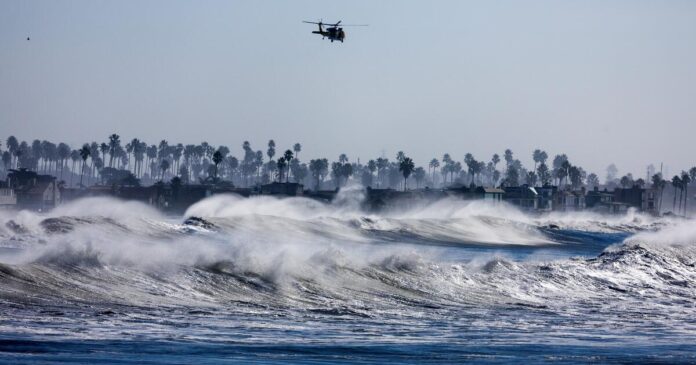
As rain swept across Southern California early Saturday, heavy surf and high tides continued to pound the coast and prompted warnings for people to stay away from the water as dangerous conditions persist.
Waves as high as 20 feet were forecast in Los Angeles and Ventura counties, while even larger swells were expected to roll in on the Central Coast and Northern California. Officials warned that the powerful waves and strong currents could sweep people into rocks, jetties and into the ocean.
“It is generating extremely dangerous conditions at beaches,” said Rose Schoenfeld, meteorologist with the National Weather Service in Oxnard. “This is the highest surf we’ve had in the last year. It’s definitely more like once every few years.”
A series of strong waves pummeled the Ventura coast on Thursday, sending onlookers scrambling as the waves swept past seaside barriers and barreled down city streets. At least eight people were injured and several businesses were damaged as the waves broke windows and flooded buildings.
All beaches and coastal parks in Ventura County were closed Friday and will remain closed over the New Year’s weekend, including the Ventura Pier, seaside campgrounds and harbor entries, officials said.
Officials also warned people to be wary of “sneaker waves,” much like the one that caught Ventura beachgoers by surprise this week. The powerful waves are created by larger-than-average swells that can suddenly and without warning surge much farther inland than expected, breaking over rocks and lifting logs or driftwood onto the beach with deadly force.
Meanwhile, Saturday’s storm brought up to three-fourths inches of rain to Los Angeles and Ventura counties, while nearly 2 inches fell in Santa Barbara County, according to the weather service. Patchy showers were fading, while forecasters said more light rain is expected Sunday night into Monday.
In addition to the heavy surf, the rain also brought other potential hazards at beaches. L.A. County’s Department of Public Health advised people to avoid contact with water through Tuesday because flowing storm drains and creeks can lead to higher levels of bacteria and chemicals.



